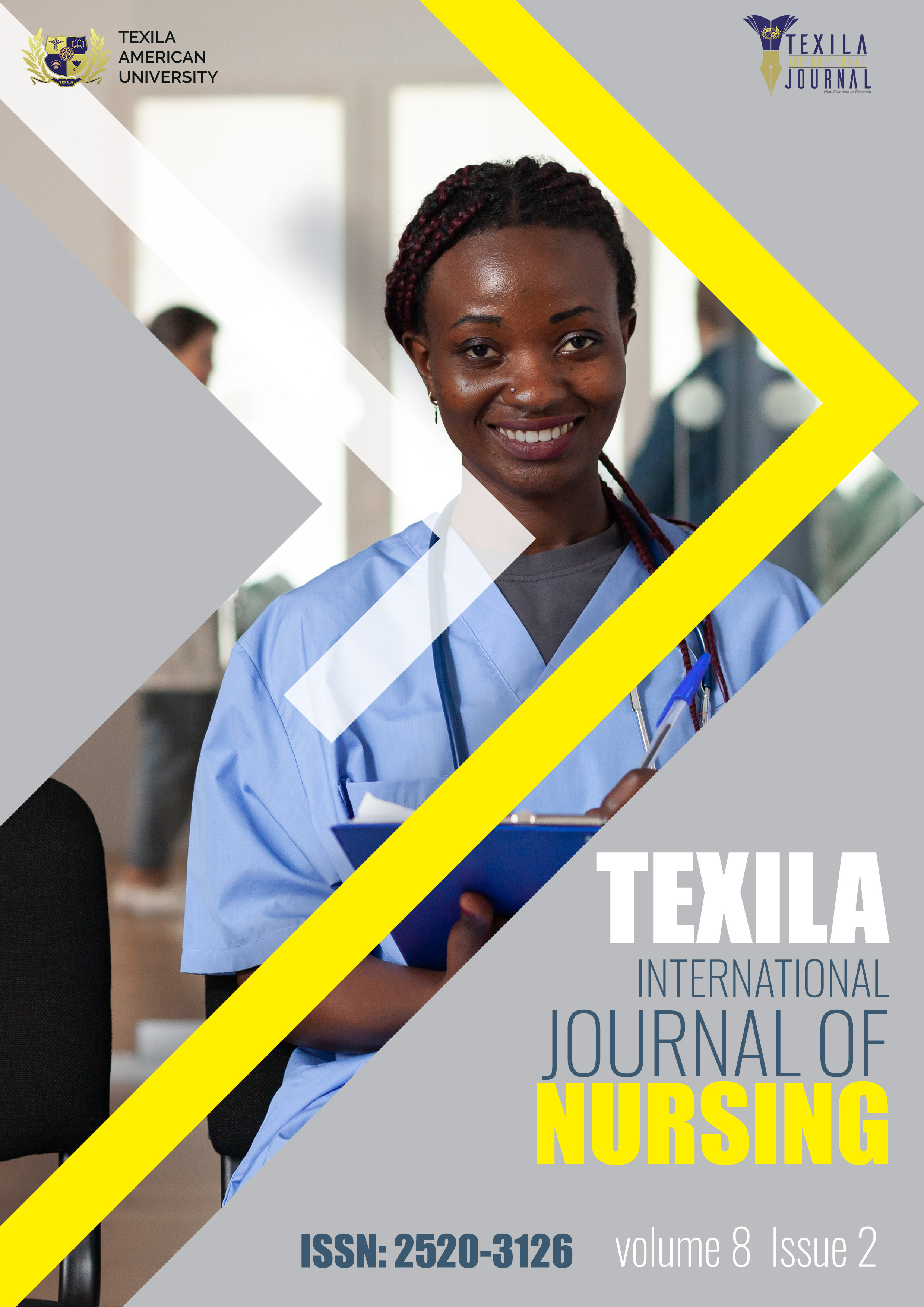References:
[1] Smeltzer,
S. C. Bare, B. G. Hinkle, J. L. & Cheever, K.H., (2008). Textbook of Medical-Surgical
Nursing. 11th ed. Lippincott Williams & Wilkins.
[2] Chrisman, J. Jordan, R.
Davis, C. & Williams, W., [2014]. Exploring Evidence-based Practice Research.
Journal of IWW. 12[4]: 8-12. https://doi.org/10.1097//01.NME.000045029593626.e7.
[3] Turner,
M., [2014]. Evidence-Based Practice in Health. https://canbrra.libguides.com/evidence.
[4] Agrawal, K. & Chauhan,
N., [2012]. Pressure Ulcers: Back to the Basics. Indian Journal of Plastic Surgery.
45[2]: 244-254. https://doi.org/10.4103/0970-0358.101287.
[5] Shiferaw,
W.S. Aynalem, Y.A.& Akalu, T. Y., [2020]. Prevalence of Pressure ulcers among
Hospitalized Adult Patients in Ethiopia: A Systematic Review and Meta-analysis.
BioMed Central Dermatol. https://doi.org/10.1186/s12895-020-00112=2bmcdermatol.biomedcentral.com.
[6] Polit, D.F.
& Beck, C.T., [2012. Nursing Research:
Generating and Assessing Evidence for Nursing Practice. 9th ed.
Lippincott Williams and Williams.
[7] Famutimi,
E.O. & Fowomola, B.B., (2015). Knowledge and Utilization of Evidence-based Nursing
Practice among Nurses of Offa Specialist Hospital Kwara State. Journal of Nursing
and Health Science.4(4): 51-62. http://www.iosrjournal.org/.
[8] Mathieson,
A. Grande, G. & Luker, K., (2019). Strategies, Facilitators, and Barriers to
Implementation of Evidence-based Practice in Nursing Community: A Systematic Mixed-studies
Review and Qualitative Synthesis. Primary Healthcare Research Development.20 (6)
https://doi.org/10.1017/S14634236/8000488w.iosrjournal.org.
[9] Shu Li,
M. B. Meijuan, C.A.O. & Xuejiao, Z., (2019). Evidence-based Practice, Knowledge,
Attitude, Implementation, Facilitators, and Barriers among Community Nurses-Systematic
Review. Doi:10.109/MD.0000000000017209.
[10] Onigbinde,
A. T., [2012]. Pressure Ulcers Incidence among High Risk in Patients in Nigeria.
British Journal of Nursing.
[11] Bhattacharya,
S. & Mishra, R.K., [2015]. Pressure Ulcers: Current Understanding and Newer
Modalities of Treatment. https://ncbi.nlm.nih.gov/.
[12] United State
Department of Health and Human Services. The White House. [2020]. Preventing Pressure
ulcer in Hospital. https://www.ahrq.gov/.
[13] Esan, T.
Fasoro, A. Ojo, F. & Obialor, B. A., (2018). Descriptive Cross-sectional Study
to Assess Pressure Ulcer Knowledge and Pressure ulcer Prevention, Attitude, of Nurses
in a Tertiary Health Institution in Nigeria. Ostomy Wound Manage. 6496):24-28. Doi.org/10.25270/owm.2018.6.2428.
[14] Gorecki,
C. Brown, J. M. Nelson, E.A. Briggs, M. Schoonhoven, L. Dealey, C. Defloor, T. &
Nixon, J., [2009]. Impact of Pressure ulcers on Quality of Life in Older Patients:
A Systematic Review. J A M Geriatrics. Google Scholar.
[15] Rutledge,
D. A. & Bookbinder, M. (2002). Process and Outcomes of Evidence-based Practice.
https://doi.org/10.1053/sonu.2002.30036.
[16] Gillespie,
B.M. Walker, B. M. Latimer, S.L. Thalib, L. Whitty, J.A. Mclnnes, E. &. Chaboyer,
W.P. (2020). Repositioning for Pressure Injury Prevention in Adults. Conchrane
Database Systematic Review. 2(6); https://doi.org/10.1002/14651858.CD009958.
[17] Majid, S.
Foo, S. Luyt, B. Zhang, X. Thang, Y. & Chang, Y., [2012]. Adopting evidence-based
Practice in Clinical Decision-making: Nurses’ Perceptions Knowledge and Barriers.
Journal of the Medical Library Association. 99[3]: 229-236. https://doi.org/10.3163/1536-5050.99.3.010.
[18] Gardiner,
L. Lampshire, S. Biggins, A. MacMurray, A. Noake, N. VanZyl, M. Vickery, J. Woodage,
T. Lodge, J & Gillespie, B.M. Walker, B. M. Latimer, S.L. Thalib, L. Whitty,
J.A. Mclnnes, E. &. Chaboyer, W.P. (2020). Repositioning for Pressure Injury
Prevention in Adults. Conchrane Database Systematic Review. 2(6); https://doi.org/10.1002/14651858.CD009958.
[19] Yap, T.
L’ Kennerly, S. M. & Horn, S., (2016). An Evidence-based cue Selection Guide
and Logic Model to Improve Pressure ulcer Prevention in Long Term Care. Journal
of Nursing Care Quality. 31(1): 75-83. https://doi.org/10.1097/NCQ.0000000000000128.
[20] Nieswiadomy,
R. M. & Bailey, C., [2018]. Foundations of Nursing Research. 7th
ed. Pearson Education, Inc.
[21] Hsieh, P. & Chen, S.,
[2020]. Effectiveness of an Evidence-based Practice Educational Intervention among
Student Nurses. https://doi.org/10.3390/ijerph17114083.
[22] Olowosejeje,
S. A., (2020). Quantifying the Challenges Associated with Poor Electricity Supply
in Nigeria and the Role of a Hybrid P V System in Addressing them. https://creativecommons.org//licenses/by-nc-nd/4.0/Accessed
2 February 2022.
[23] Chijindu, A.C. Ezenuigbo,
C. & Emeh, A.N., (2016). Evaluation of Barrier to the Implementation of Evidence-based
Practice among Nurses Working at Federal Teaching Hospital Abakaliki. European-American
Journal. https://www.eajournals.org Accessed 2 February 2022
[24] Koch, A.J.
D’Mello, S.D.& Sackett, P.R., [2016]. A Meta-analysis of Gender Stereotypes
and Bias in Experimental Simulations of Employment Decision Making. Journal of
Applied Psychology Health and Wellbeing; 100[1]:128-61. https://doi.org/10.1037/a0036734.
[25] McGrath,
J., (2005). Critical Thinking and Evidence-based Practice. Journal of Professional
nursing. 21(6):364-71. https://doi.org/10.1016/j.profnurs.2005.10.002.
[26] Kueny, A.
Shever, L. L Mackin, M.L. Titler, M.G., [2015]. Facilitating the implementation
of evidence-based practice through contextual support and nursing leadership. Journal
of Healthcare Leadership. 7:29-39. https://doi.org/10.2147/jhl.s45077.
[27] Chiwaula,
C. H. Kanjakaya, P. Chipeta, D. Chikatpwa, A. Kalimbuka, T. Zyambo, L. Nkata, S.
& Jere, L. D., (2020). Evidence-based Nursing. International Journal of Africa
Nursing Sciences. https://doi.org/10.1016/ijans2020.100272.
[28] Hospital
Management Board. (2021). Nominal roll for Nurses Delta State.
[29] The American
Association of Colleges of Nursing. (2021). Clinicians with Bachelor of Science
in Nursing. https://www.aacnnursing.org.
[30] Morrison,
A.L. Durie, M. & Beck, C.R., (2001). The effects of nursing staff inexperience
on the occurrence of adverse patient experiences in ICUs. https://doi.org//10.1016/s1036.7314(01)80028x.
[31] Calzon,
B., (2022). How to Improve Facility Management with Healthcare Reports. datapine.com
[32] Young, C.,
(2021). Using the ‘a SSKINg model in pressure ulcer prevention and care planning.
https://doi.org./10.7748/ns,2021.e/1674 Journal of Nursing Standard.
[33] Wright,
G., (2022). Best Practice. https://www.techtarget.com.
[34] Kumari,
S. Sharma, D. Biswal, U. C. Rana, A. Kuma, A. Pathak, R. & Lal, R., (2012).
Risk assessment tool for pressure ulcer development in Indian surgical wards. Doi:10.1007/s12262-012-0779-y.
[35] Pancorbo-Hidalgo,
P. L. Garcia-Fernandez, F. P. Lopez-Medina, I. M. & Alvarez-Nieto, C., (2006).
Risk Assessment Scales for Pressure Ulcer Prevention: A Systematic Review. Journal
of Advance Nursing. 54 (1):94-110. Doi.10.1111/j1365-2648.2006.0379x.
[36] Jo Brown,
S., (2004). The Braden scale: A review of the research evidence. National Association
of Orthopedic Nurses. 23 (1): 30-8.

 Factors Associated with Prevention and Control of Hospital Acquired Infections within Nurses in Ngora Fredica Hospital Ngora District Eastern UgandaAuthor: Oloit JuliusDOI: 10.21522/TIJNR.2015.08.02.Art001
Factors Associated with Prevention and Control of Hospital Acquired Infections within Nurses in Ngora Fredica Hospital Ngora District Eastern UgandaAuthor: Oloit JuliusDOI: 10.21522/TIJNR.2015.08.02.Art001 Evidence-Based Practice: Nurses’ Knowledge and Implementation in the Prevention of Pressure Sore Amongst Debilitating Patients in Selected Government Hospitals, Delta StateAuthor: Nkor, Mary ModupeDOI: 10.21522/TIJNR.2015.08.02.Art002
Evidence-Based Practice: Nurses’ Knowledge and Implementation in the Prevention of Pressure Sore Amongst Debilitating Patients in Selected Government Hospitals, Delta StateAuthor: Nkor, Mary ModupeDOI: 10.21522/TIJNR.2015.08.02.Art002 Socio-cultural and Gender Impacts on Resilience Access to and Utilization of Contraceptives Service during Covid-19 Pandemic by Women of Reproductive Age in Oyo State, NigeriaAuthor: Esther OyewoDOI: 10.21522/TIJNR.2015.08.02.Art003
Socio-cultural and Gender Impacts on Resilience Access to and Utilization of Contraceptives Service during Covid-19 Pandemic by Women of Reproductive Age in Oyo State, NigeriaAuthor: Esther OyewoDOI: 10.21522/TIJNR.2015.08.02.Art003 Perception and Acceptability of Reusable Menstrual Pads among Secondary School Girls in Ilorin, Kwara StateAuthor: Onasoga, Olayinka ADOI: 10.21522/TIJNR.2015.08.02.Art004
Perception and Acceptability of Reusable Menstrual Pads among Secondary School Girls in Ilorin, Kwara StateAuthor: Onasoga, Olayinka ADOI: 10.21522/TIJNR.2015.08.02.Art004
